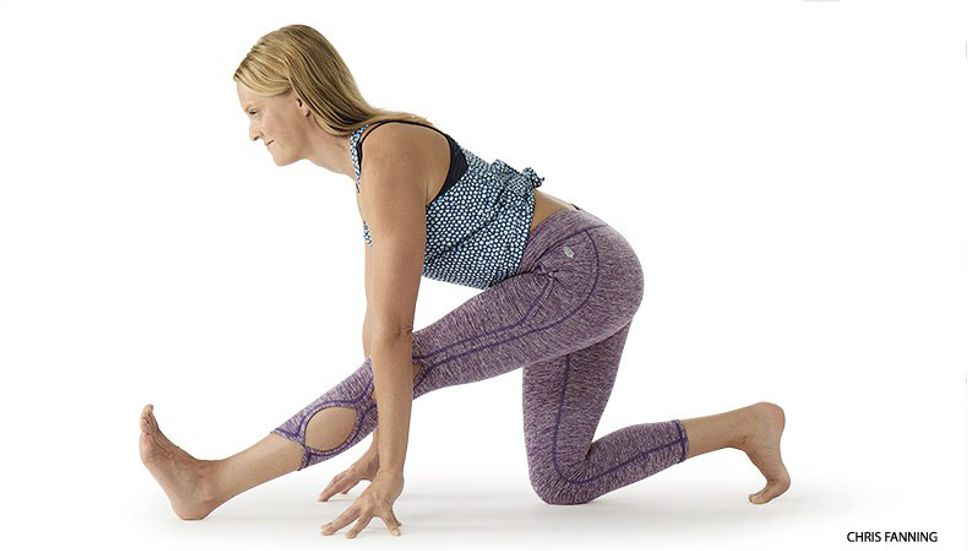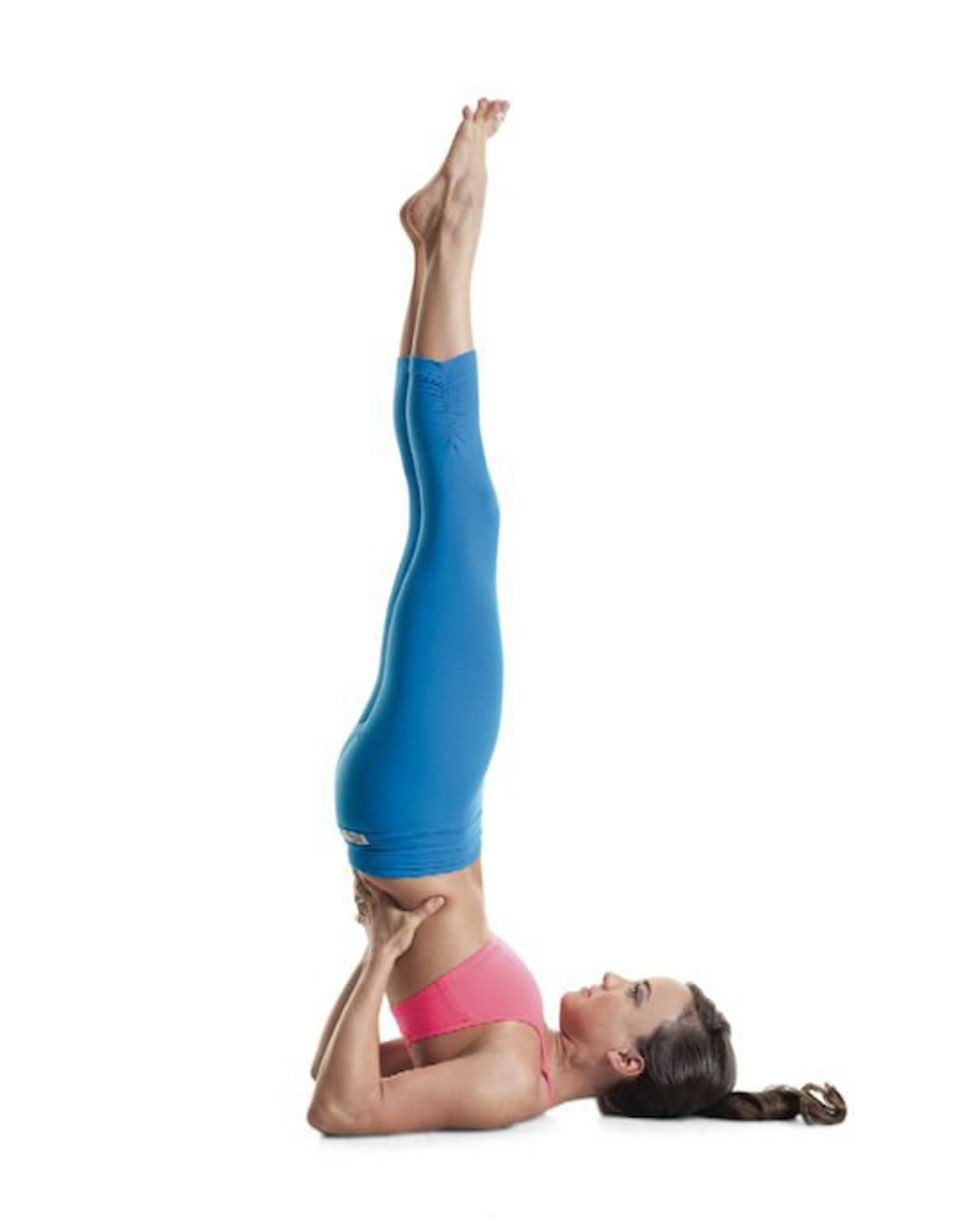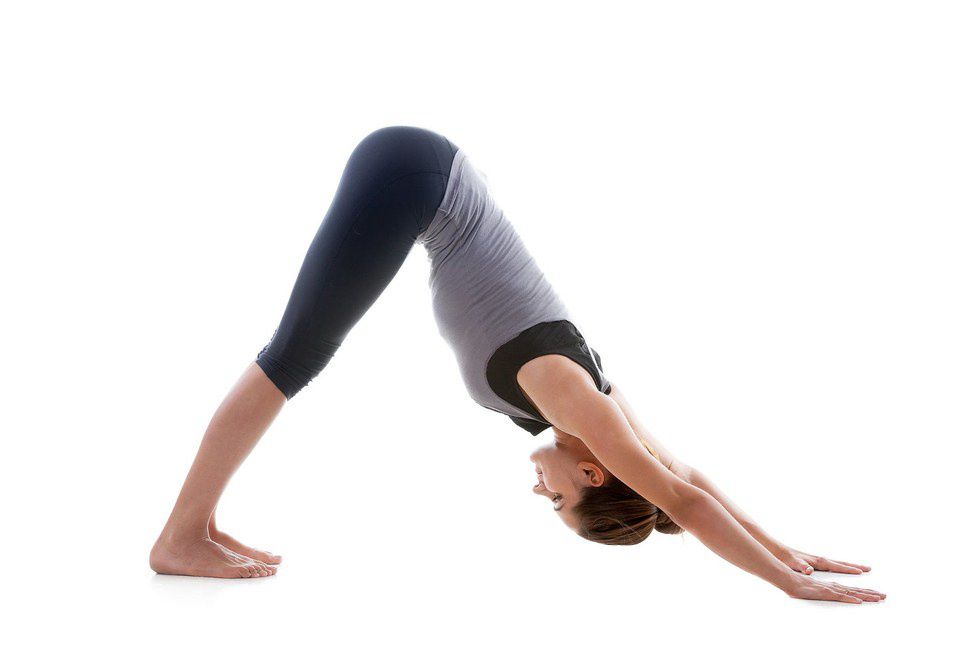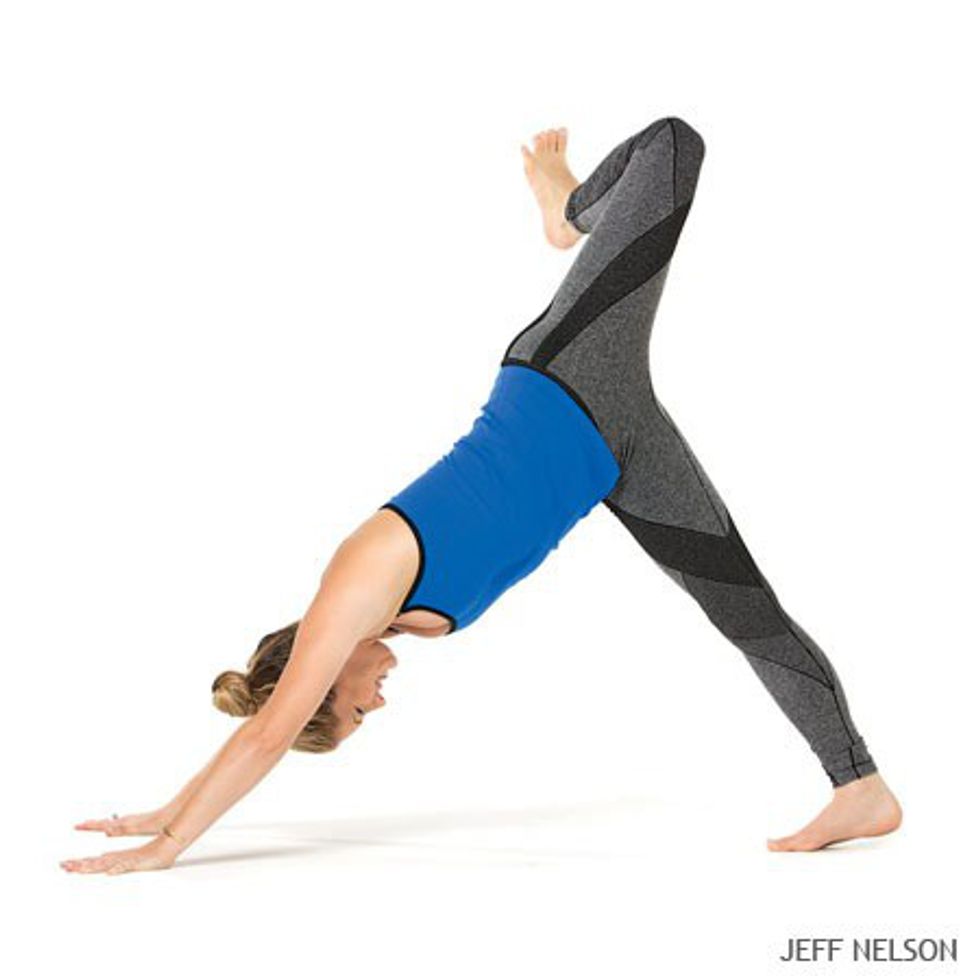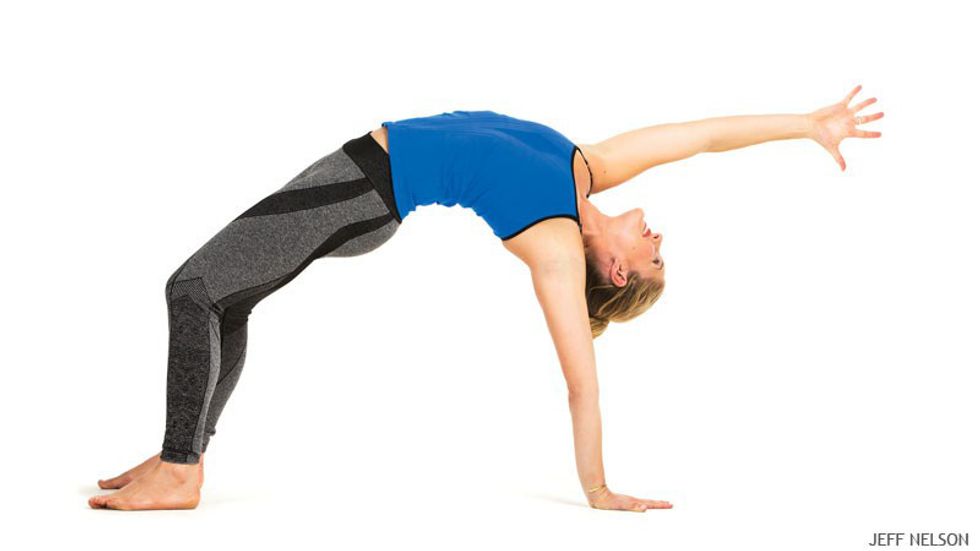As I sit here writing this, I have my legs elevated with an ice pack on my shins. For any runners and yogis, you know how frequent and irritating shin splints can be and how yoga can worsen the pain in certain poses. So after ignoring my annoying shin splints for many weeks, while continuing to do power vinyasa yoga and attempt switch kicks (I strongly do not recommend this), I figured it was time I look into how yoga can help heal my shin splints rather than injure them further. Here’s what I came up with:
1. Half monkey/half split
Recommended for you
Ideally, every time after running, you should be doing a stretch similar to this one. You can put your toes up a few inches on a wall and lean toward the wall to stretch the back of your calf out, on each side. This pose is essentially that same stretch, but being on one knee allows you go deeper. You can also alternate between flexing the front foot and pointing it to see what feels better for your shin.
2. Shoulder stand
Any inverted pose will help release your calf muscles because the blood is flowing in the opposite direction, which takes some pressure off your shin pain. If you are not yet comfortable with a full shoulder stand into plow pose, use a wall to walk your feet up the wall until your legs are straight and you can feel the blood flow reversing. To get out of this pose against the wall, bend your knees to your chest and roll to your side before sitting back up.
3. Downward dog/one-legged dog
Downward dog is a classically cleansing pose, however, when dealing with shin splints, putting that much pressure on your lower legs can hurt. If so, try “walking your dog out,” meaning, bending each leg until you feel your calf muscles loosening up. Downward dog is also known as a transition pose, meaning you do this pose during a sun salutation when you’re transitioning from plank to forward fold, for example. When going from downward dog to forward fold, do not, I repeat, do not jump or hop forward. Walk your feet to the front of your mat while you are recovering from shin splints. Any kind of movement that lands you on your heels will set your recovery back because shin splints are worsened by stress to the heels. If one shin is better than another, one-legged dog can help you release the worse leg by lifting it, while keeping your hips in line with one another. Or, you can “flip your dog,” in which you would open your lifted leg to stack your hips, pick up the hand on the same side as your lifted leg and land your foot gently on the ground, like so:
This pose is great because your weight should be evenly distributed between your legs and arm. If you feel shooting pain in your shin after resting your lifted foot down into the flipped dog pose, come out of it immediately.
It’s important to remember that feeling a stretch in your calf muscle is good, maybe even some discomfort is fine, but pain, especially a sharp sensation, means you need to carefully come out of that pose and rest. I would suggest staying away from poses like Warrior 3, or any poses that require all of your body weight to be supported by one leg. You may find Hero pose to be therapeutic, but I find that the pressure intensifies when I sit on my heels. These yoga poses should bring you some relief after a good, long run and I hope you find them helpful. Namaste.


